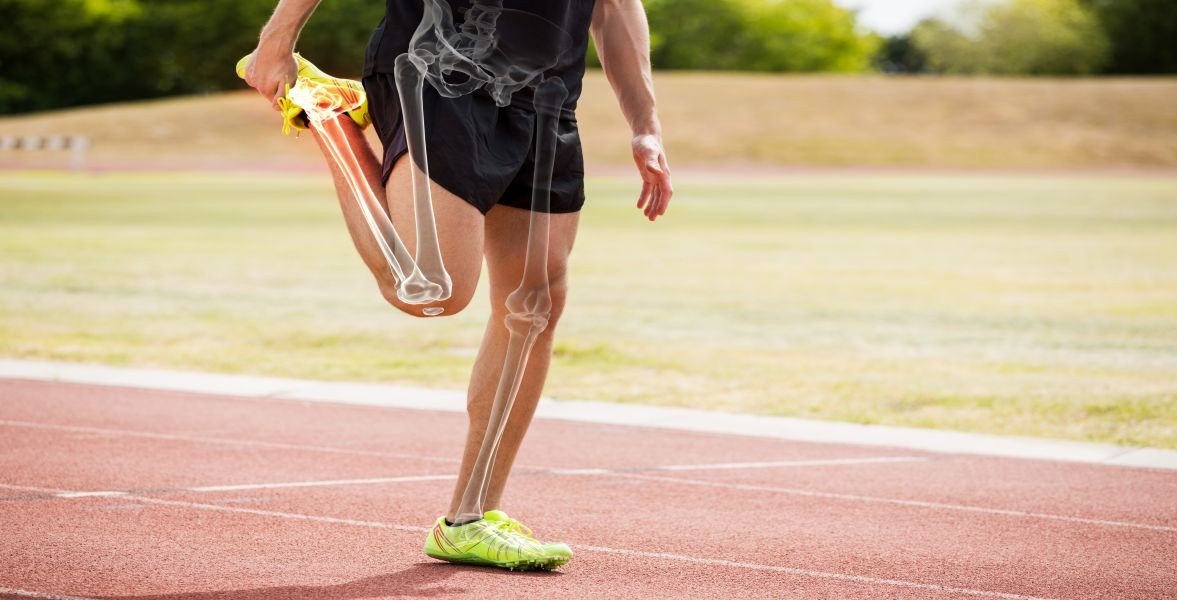
Created by - Dr. Prashant Raj
NATURAL WAYS TO BUILD HEALTHY BONES
Bone health is important throughout one's life. You have a higher risk of developing fragile bones, if enough bone mass is not created or if a bone loss occurs later in life. However, because symptoms often don't appear until the bone loss has progressed, people tend to take their strong bones for granted. Fortunately, there are a variety of nutrition and lifestyle habits that can aid in the development and maintenance of strong bones, and it's never too early to begin.1. Eat a Variety of Vegetables: Vegetables are a good source of vitamin C, which promotes the production of collagen in the bone matrix. Vegetables appear to boost bone mineral density as well. Increased bone mineralization during childhood and the maintenance of bone mass in young adults has been linked to a high intake of green and yellow vegetables. 2. Engage in Strength Training and Weight-Bearing Exercises: Specific types of exercise can aid in the development and maintenance of strong bones. Weight-bearing or high-impact exercise, which promotes the formation of new bone, is one of the best types of activity for bone health. More than just gaining muscle mass, strengthening exercises are beneficial. It may also help protect women of all ages, including those with osteoporosis. 3. Get Enough Protein: Getting enough protein is critical for bone health. Protein accounts for about half of all bone mass. Low protein consumption reduces calcium absorption and may affect bone density. This does not happen in people who eat up to 100 grams of protein per day, as long as they eat plenty of protein and get enough calcium. 4. Consume Calcium-Rich Foods Throughout the Day: Calcium is the most important mineral for bone health and is the mineral that makes up the majority of your bones. Because old bone cells are constantly broken down and replaced by new ones, calcium consumption should be done daily to maintain bone structure and strength. As a result, it's best to spread your calcium intake throughout the day by eating one of these high-calcium foods at each meal. Milk, cheese, and other dairy foods, green leafy vegetables (but not spinach), soya beans, plant-based drinks (such as soya drink) with added calcium, nuts, bread, and anything made with fortified flour, and fish are all good sources of calcium. Although spinach is high in calcium, it also contains oxalate, which inhibits calcium absorption. As a result, spinach is not a good calcium source. 5. Get Plenty of Vitamin D and Vitamin K: Vitamin D and vitamin K are critical for strong bone development. Sun exposure and foods such as fatty fish, egg yolks, fortified foods (such as some fat spreads and breakfast cereals), and cheese may be sufficient sources of vitamin D. Many people, however, require daily vitamin D supplements of up to 2,000 IU to maintain optimal levels. 6. Take a Collagen Supplement: Collagen is the most abundant protein in bones. Glycine, proline, and lysine are amino acids that help build bone, muscle, ligaments, and other tissues. For many years, collagen has been used to relieve joint pain. Collagen appears to have beneficial effects on bone health as well as joint conditions like arthritis. 7. Eat Magnesium and Zinc-Rich Foods: Calcium isn't the only mineral important for bone health. Others, such as magnesium and zinc, also play a role. Over 73,000 women were studied, and it was discovered that those who consumed 400 mg of magnesium per day had 2–3% higher bone density than those who consumed half that amount. Zinc is a trace mineral that is required in trace amounts. It contributes to the mineralization of your bones. Beef, shrimp, spinach, flaxseeds, oysters, and pumpkin seeds are all good sources of zinc. 8. Eat Foods Rich in Omega-3 Fatty Acids: Omega-3 fatty acids are known for their anti-inflammatory properties. They've also been shown to aid in the prevention of bone loss as people age. In addition to including omega-3 fats in your diet, it's also critical to maintaining a healthy ratio of omega-6 to omega-3 fats. Chia seeds, flaxseeds, and walnuts are all good sources of omega-3 fats from plants.
More detailsPublished - Thu, 16 Jun 2022
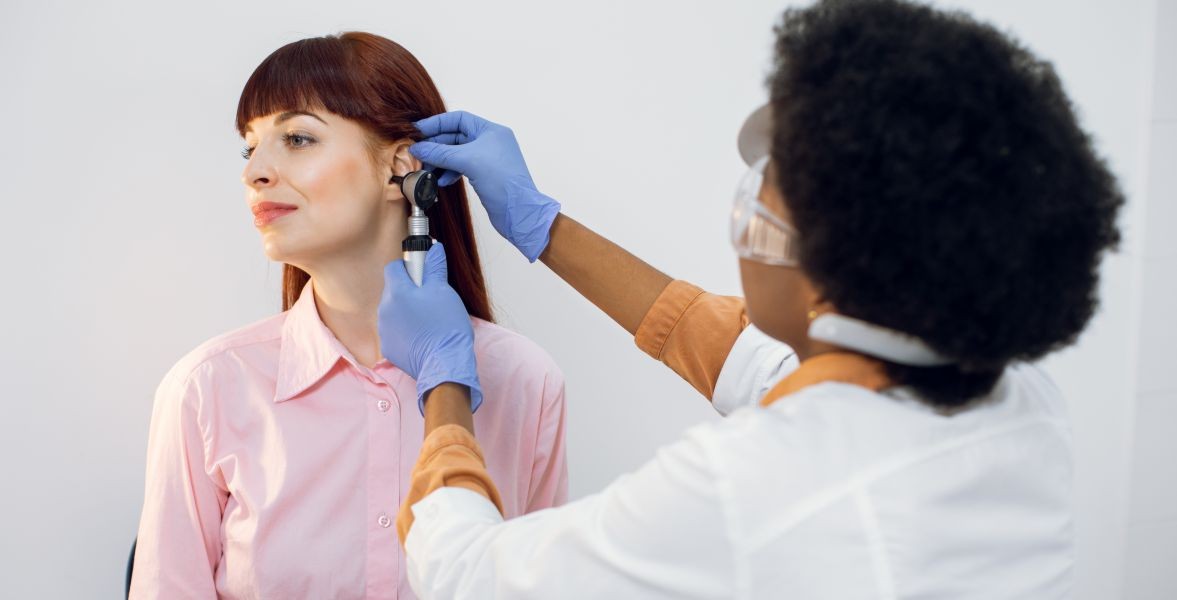
Created by - Dr. Prashant Raj
HEARING LOSS
It's difficult to hear or understand sounds if you have hearing loss. This occurs when one or more parts of the ear, the nerves that run from the ears, or the brain's hearing center malfunction. Hearing loss is a condition that some people are born with. Hearing loss, on the other hand, may develop gradually over time or appear later in life. Hearing loss can run in families or be caused by birth defects, infections, or ear-damaging medications. These types of hearing loss are unavoidable. Noise-induced hearing loss, on the other hand, is preventable. People who work in noisy environments, such as construction sites, road crews, and factories, may lose their hearing over time if they are not properly protected.A decibel is a unit of measurement for sound levels that is commonly used in communication, signaling, and electronics. The decibel levels of some common noises are as follows:Normal conversation levels – 60-65dBStreet traffic – 75-85dBMotorcycles – 100 dBRock concerts and ambulance sirens – 120dBFireworks – 140-160dBSound from a movie theatre during action scenes – 100dBDigital music is blasting from the speakers.– 112dBCar horns and nightclub music – 110DbForklift and similar heavy machinery – 85dBHeavy traffic or a lawnmowerFrom about 25 feet away, a tractor-trailer truck– 95-100dBChainsaw – 115-120dBHearing loss can show up in several ways, including:Muffling of speech and other soundsRequesting that others speak more slowly, clearly, and loudly regularlyRising the television or radio volumeWithdrawal from conversationsAvoidance of some social settingsHaving trouble understanding words, especially when there is background noise or when there are a lot of people aroundHaving trouble hearing consonantsIndividuals who frequently listen to loud music with headphones while attending open-air music festivals or nightclubs, on the other hand, may be affected. Many adults eventually notice that they're pressing the "volume up" button on the TV remote more frequently, or that a large number of people in their immediate vicinity need to speak up. While there are numerous hearing loss myths, there are two main reasons why people begin to lose their hearing:Age: As you get older, your inner ear's tiny hair cells break down and can no longer pick up sound vibrations as well as they once could.Noise: Exposure to a lot of loud noise for an extended period can harm the hair cells in your ears.Damage to Hair Cells: When there is noise, hair cells bend in the same way that tall grass bends in the breeze. The more they flex, the more damage they cause to your hearing. The cells may straighten after a recovery period, but if they are too damaged, they will begin to die. In the average person's inner ear, there are approximately 16,000 hair cells. If a hearing test reveals that you have hearing loss, 30 to 50 percent of these cells have likely been damaged. This type of damage is frequently caused by noise and is This type of damage is frequently caused by noise and is usually irreversible.Damage to the Ear Nerves: When sound vibrations strike the eardrum, the acoustic nerve, also known as the auditory nerve, transmits sound information from the inner ear to the brain. They effectively transmit sound when they work together with the middle and outer ear. Minor damage may not show up on a hearing test, but you may notice that hearing and understanding the person next to you in a noisy restaurant or crowd is becoming increasingly difficult.Too Much Noise: Being bombarded with loud noises for an extended period can cause hearing damage. It can also happen if you're near loud, short bursts of noise, such as fireworks or gunshots. Avoiding loud noises as much as possible is the best way to avoid hearing loss.Most types of hearing loss are irreversible. You can, however, improve your hearing by working with your physician or a hearing specialist.
More detailsPublished - Thu, 16 Jun 2022
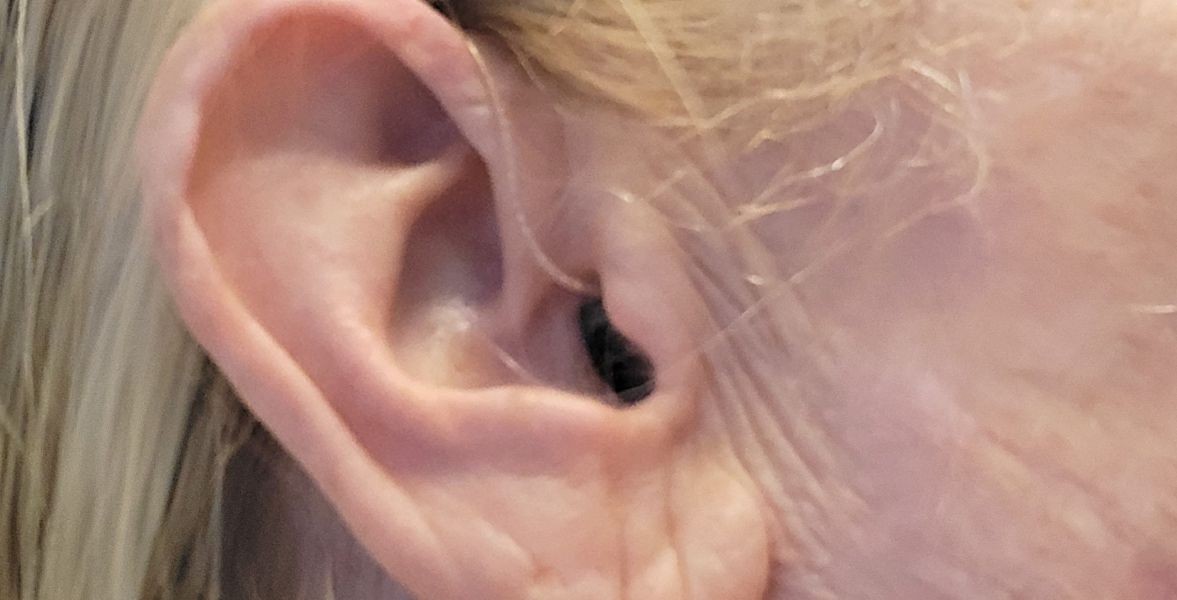
Created by - Dr. Prashant Raj
HOW TO PREVENT HEARING LOSS
Knowing what is considered "loud" and limiting your exposure are the keys to preventing hearing loss. If you're in an environment where you're shouting to be heard above the din, you're putting your hearing at risk. Hearing loss can be caused by repeated or long-term exposure to sounds with a decibel level of 85 or higher. While not all types of hearing loss can be avoided, you can take steps to reduce your chances of developing age-related or noise-induced hearing loss. When it comes to loud noises, it's never too early—or too late—to start wearing hearing protection.Hearing loss prevention is critical throughout one's life, from prenatal and perinatal stages to later years. Nearly 60% of hearing loss in children is caused by preventable causes that can be avoided by implementing public health measures. Similarly, the most common causes of hearing loss in adults, such as loud noise exposure and ototoxic medications, can be avoided. It's possible to gradually lose your hearing and not realize it until the damage is irreversible. Here are a few hearing tips to help you begin protecting your hearing right away.Use Hearing Protection: If you know you'll be exposed to loud noise for more than a few minutes, consider using hearing protection such as earplugs (foam or rubber plugs that go in your ear canal and can reduce noise by 15 to 30 decibels) or earmuffs (These fit completely over your ears and reduce sounds by about 15 to 30 decibels). Avoid standing near the speakers or the area where fireworks will be launched. The loud noise can quickly cause damage. Earplugs and earmuffs can be worn together for even more protection.Reduce the volume: If you have to yell to hear the television, radio, or streaming device, lower the volume. If the person next to you can hear what you're listening to through headphones, it's probably too loud.Stick to the 60:60 Rule: Allow yourself no more than 60 minutes per day to listen to music at 60 percent of maximum volume.Invest in Noise-Canceling Headphones: It can help you hear music, movies, and phone conversations better by blocking out background noise. This allows you to use a lower volume and rest your ears.Properly Remove Earwax: Wax buildup in your ears can cause sound to be muffled. Cleaning them out with a cotton swab, on the other hand, can push wax deeper in. Instead, soften the wax with an at-home irrigation kit and gently wash it away. Your doctor may need to remove it if it becomes compacted in your ear.Check Medications for Hearing Risks: Approximately 200 drugs, including some antibiotics and cancer-fighting drugs, can cause hearing loss. Even high doses of aspirin can cause your ears to become damaged. Check with your doctor if you're taking a prescription medication to make sure it won't interfere.Don't Put Anything in Your Ear: The general rule is that you shouldn't put anything in your ear that is smaller than your elbow. Cotton swabs, paperclips, bobby pins, keys, and anything else you might use to scratch or clean your ears fall into this category.Turn down the Volume in the Car: Listening to loud music in a confined space can cause damage to your ear's hair cells. Reduce the volume when the windows are closed. While it's fun to feel the wind in your hair while driving with the windows down, the noise it creates can lead to hearing loss. It is preferable to keep the window up when driving at high speeds.Keep Moving: Exercise circulates blood throughout your entire body, including your ears. Circulation is important for maintaining oxygen levels and keeping the internal parts of the ears healthy.Avoid Earbuds: Although they are less noticeable than traditional earmuff style headphones, earbuds do not effectively block out background noise. This may tempt you to turn up the volume, causing hearing damage.Maintain healthy blood pressure and heart: High blood pressure and heart disease can harm the delicate mechanisms that help you hear inside your ear. Follow your doctor's treatment recommendations if you have high cholesterol or blood pressure.Maintain a healthy weight: Diabetics are twice as likely to develop hearing loss. Diabetes can harm the cells in your inner ear, just like high blood pressure. Maintain a healthy blood sugar level.Eat foods high in certain vitamins and minerals: Good hearing requires a variety of vitamins and minerals, particularly B12, potassium, and magnesium. Because iron deficiency anemia is linked to hearing loss, eat a diet high in iron.Don't smoke and drink in moderation: Tobacco use has been linked to a higher risk of hearing loss, according to research. If you don't smoke, stay away from secondhand smoke. Similarly to heavy alcohol consumption, can result in a toxic environment in the ear.
More detailsPublished - Sat, 18 Jun 2022
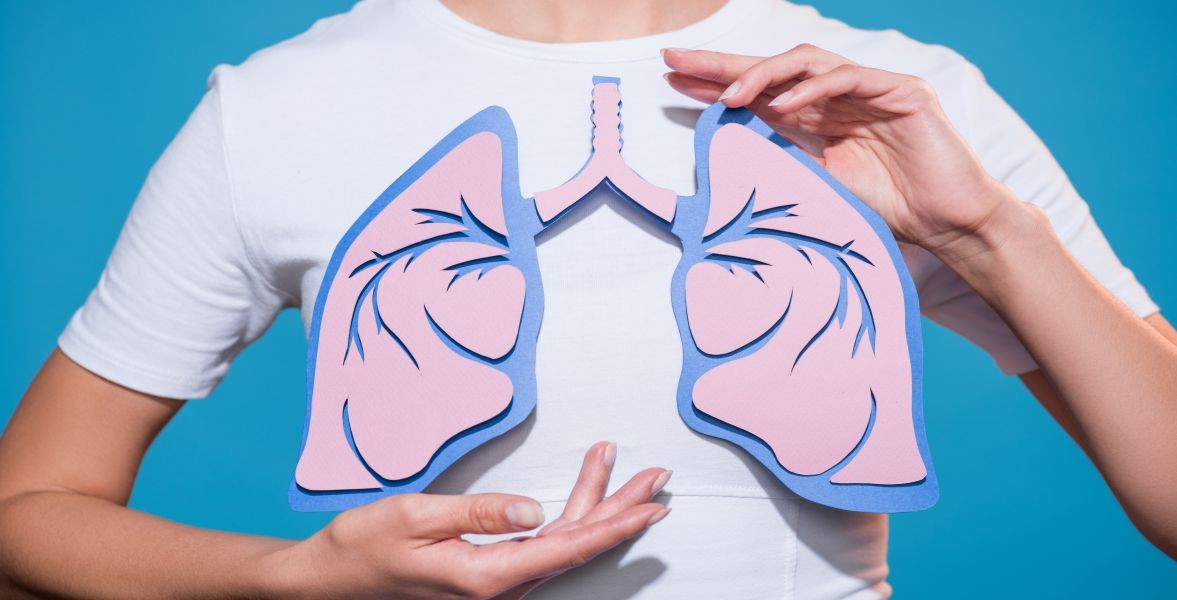
Created by - Dr. Prashant Raj
KEEP YOUR LUNGS HEALTHY
We take our lungs for granted at times. They keep people alive and well, and we don't have to think about them for the most part. As a result, prioritizing your lung health is critical. Currently, the steps we take to prevent the spread of COVID-19 can also protect you from other respiratory illnesses. The natural defense system in your body is designed to keep dirt and germs out of your lungs. However, there are some important things you can do to lower your lung disease risk. Here are some tips for keeping your lungs in good shape.Avoid Inhaling Indoor Pollutants That Harm Your Lungs: Lung disease can be caused or worsened by secondhand smoke, chemicals in the home and workplace, and radon. Make your home and surroundings, smoke-free environments. On days when the weather is bad and air quality is poor, avoid exercising outside. Reduce your exposure to polluted outdoor air: The air quality outside varies from day to day and can be unhealthy to breathe at times. Knowing how outdoor air pollution affects your health and how to reduce long-term exposure can help you and your family stays healthy. Natural disasters and climate change can have a direct impact on lung health.Don't Smoke: Tobacco use is the leading cause of preventable death, accounting for 90% of all COPD and lung cancer deaths. Smoking cigarettes constricts the airways, making it difficult to breathe. Cigarette smoke damages lung tissue over time and may cause changes that lead to cancer.Examine yourself regularly: Consult your primary care physician regularly and discuss any concerns you have about your lung health, such as any symptoms of lung cancer or a family history of lung disease.Prevent Infection: A cold or other respiratory infection can be dangerous if not treated promptly. You can safeguard yourself by taking the following steps:• Hands must be washed with soap for at least 20 seconds. If you can't wash, alcohol-based cleaners are a good alternative.• When it's cold and flu season, stay away from the crowds.• Good oral hygiene can protect you from infections caused by germs in your mouth. • Get vaccinated against influenza every year.• If you get sick, keep your distance from those around you, including your loved ones, to protect them. Stay at home and avoid going to work or school until you feel better.Exercise: Being physically active can help keep your lungs healthy whether you are young or old, slender or large, able-bodied, or living with a chronic illness or disability. Living a healthy lifestyle: Your immune system will remain strong if you maintain a good lifestyle to attain good health. This aids your body's defenses against respiratory infections and illnesses. Get regular exercise and be physically active every day; get enough sleep each night, and eat a nutritious diet.
More detailsPublished - Mon, 20 Jun 2022
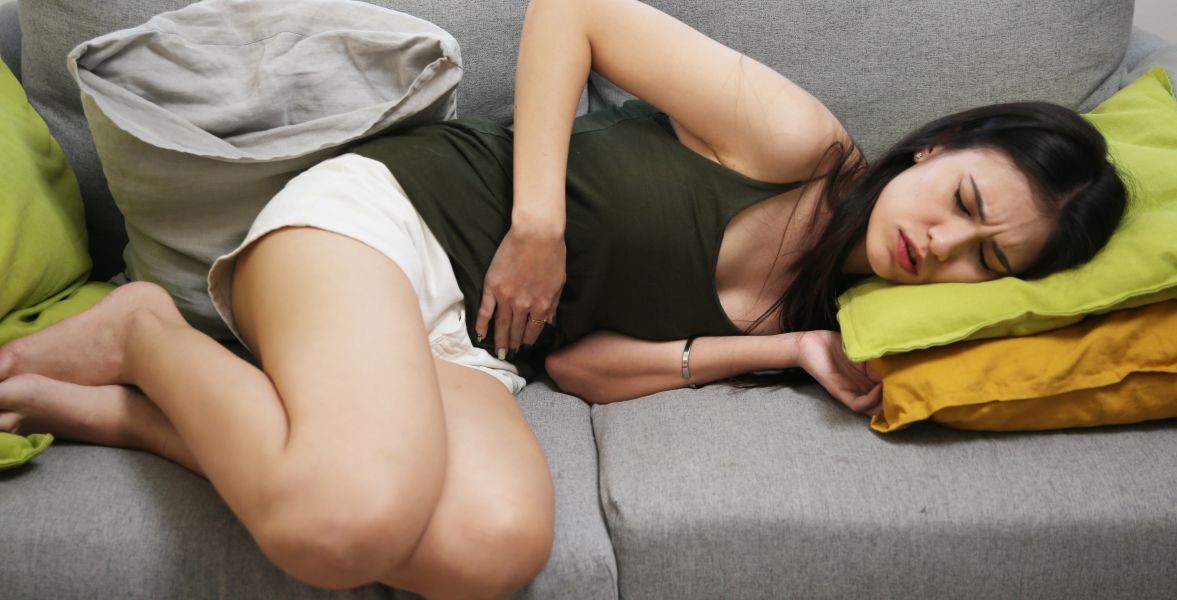
Created by - Dr. Prashant Raj
Irregular Menstrual Cycle
Although irregular periods aren't always symptomatic of a disease, it's always a good idea to seek medical advice just in case. If the length of your menstrual cycle (the time between periods) fluctuates, you have irregular periods. Your periods may arrive early or late. The usual menstrual cycle is 28 days long, although it's normal for it to be a little shorter or longer. You may have irregular periods if:The duration between your periods begins to fluctuateYou shed more or less blood during a period than usualThe number of days your period lasts varies greatlyIf your cycle is irregular, pay attention to the signs your body may give you that your period is approaching. Back cramps or stiffness, heavier breasts or soreness, headaches, acne breakouts, altered sleep patterns, mood changes, bloating, and loose stools are all possible symptoms.Period irregularities can be brought on by several things. They may be just usual for you. Changes in the levels of the hormones estrogen and progesterone in your body can cause your period to become irregular. As a result, young girls going through puberty and women approaching menopause frequently experience irregular periods. Causes of Irregular periodsThe following are some more common causes of irregular periods:Having an intrauterine device (IUD) Changing birth control pills or taking specific drugsPuberty (your periods may be erratic for the first year or two)Polycystic ovarian syndrome (PCOS)StressHypothyroidism or hyperthyroidismUterine polyps or thickening of the uterine liningUterine fibroidsPerimenopause stageManagement of Irregular periodsIf your periods are irregular, you typically don't need treatment unless they disturb you or you have another ailment that affects your menstrual cycle. Women's irregular periods are commonly caused by polycystic ovarian syndrome (PCOS) and hypothyroidism. The goal of treatment is to bring the body's hormones back into equilibrium. Extreme weight changes may have an impact on your periods. Weight increase might make it difficult for your body to ovulate, therefore losing weight could assist. Extreme, rapid weight loss, on the other hand, can result in irregular or infrequent periods. Here are some self-care recommendations:Exercise moderately and eat nutritional meals to maintain a healthy lifestyle. If you must lose weight, do so gradually rather than resorting to fad diets that severely restrict your calorie and food intake.Get adequate sleep.Use stress-reduction and relaxation strategies to keep stress at bayIf you're an athlete, reduce the amount of time you spend exercising. Excessive physical exercise might cause periods to be irregular.Follow the instructions for using birth control tablets or other contraceptive methods.To prevent infections and toxic shock syndrome, change your tampons or sanitary napkins every four to six hours.Have frequent check-ups with your doctor.If you've always had slightly irregular periods or are still in puberty, you don't need to seek medical help. However, you should visit a doctor if you have any of the following symptoms:You're below 45 years old, and your periods have become irregular. Your periods are less than 21 days apart or more than 35 days apart.Your periods are more than 7 days long.Your shortest and longest menstrual cycles differ significantly (at least 20 days).You're having problems conceiving since your periods are erratic.There may be nothing wrong, but it's a good idea to be checked out to figure out what's going on.
More detailsPublished - Mon, 20 Jun 2022

Created by - Dr. Prashant Raj
Household Equipment Give you Perfect Body
Let’s be honest between the garments, gadgets, and gymnasium membership, everything will get seriously high-ticket. Luckily, you don’t need any of these things, to begin with, your fitness regime to lead an active life. In fact, your house is crammed with free fitness equipment—if you recognize them and the way to use them. Getting in form is always a priority these days, however, gymnasium memberships aren't low-cost. That should not stop you, though—our ancestors did not have any hi-tech instruments and yet, they still managed to create up enough muscle to fight down enemies. All you have to do is look around and find out how common things at home can be very effectively utilized to carry out a workout. Let's see what are these useful items and how we can use them 1. A towelOne person’s towel is another person’s resistance band! Use a towel to assist with stretching or for a killer arm sweat. Searching for a leg challenge? Lie down on the floor, with a little towel below each foot. Then, in a very slow and controlled manner, attempt raising your legs while lying down with one end of the towel in hand. Repeat with the other leg too. Feel the burn!2. A wallWalls offer stability once you’re standing in front of the wall. Now keep your hands on the wall with your arms stretched. Now, move your body forward as if you are pushing wall You will feel some active stretching, on your quads and glutes by performing some wall exercises.3. A broomBesides sweeping, a broom may offer your core, hips, and glutes a sweat. Next time you’re sweeping the ground, shake things up by adding some hip hinges or oblique twists to your usual routine.4. A chairA durable chair (without wheels) will create a superb addition to your sweat routine, whether or not you’re attempting to excel in your squats or apply some leg raises. Place a second chair into the combination and apply some triceps dips. For an excellent larger challenge, explore this 5-5-5 Chair sweat that comes with strength, cardio, and adaptability.5. A tabletopStrengthen your arms and chest by doing many sets of tabletop push-ups. This is a good activity to sneak in when you’re anticipating water to boil or the kitchen appliance to pre-heat. Now that you are simply savvy to figure out how to use home goods, Now observe, what happens to your body once you begin walking ten,1000 steps every day.
More detailsPublished - Tue, 21 Jun 2022

Created by - Dr. Prashant Raj
Did you know that cooking in aluminum utensils can be dangerous for your health?
Cooking is an art, and plating it well just adds to the art with all that attention to detail! While cooking, you take care of a lot of things and follow all of the healthy ways of preparing food, but do you know if the tool you use to prepare your favorite meal is beneficial for your health or not? If feeding your family nutrient-dense, healthy food is a top priority, keep reading since most of the cooking equipment you use is bad for your health and often acts as catalysts for numerous chemical processes in our bodies, affecting our health! Aluminum is one of the most widely utilized metals in Indian cuisine. Steel, brass, copper, and non-stick containers are among the materials utilized.Is aluminum hazardous?Nowadays, we see a lot of aluminum metal used in several places. Aluminum cooking utensils, in particular, are an excellent choice for cooks, even when simply reheating food. Aluminum ions dissolve faster in acidic meals than in basic foods, therefore when lime, tomato, and other acidic foods are cooked in such vessels, the metal ions dissolve faster, and the food is hazardous to the health. Aluminum heats up quickly and reacts with acidic foods, but the result is not visible in the meal, thus it goes unnoticed. Aluminum enters the body in amounts of 5 to 7 milligrams every day. Aluminum ingested from food enters the bloodstream and accumulates in various organs, creating a variety of health issues. These impacts take time to manifest, but once they do, they become a part of our health, necessitating a series of therapies.Effects of toxicity on healthAluminium builds up in the body and becomes a toxin over time: The human body's ability to eliminate such metals is limited. They eventually accumulate in cells of the muscles, kidneys, liver, bones, and other tissues when this limit is exceeded. Aluminum has a toxic effect on brain cells as well. It functions as an oxidative free radical. Slow poisoning occurs as a result of the metal's accumulation in the body.Diseases resulting from food cooked in aluminum vessels:AnxietyIndigestion DepressionAbdominal painDandruffColitis (intestinal infection)Recurrent mouth inflammation and skin illnesses such as eczemaKidney diseaseDiarrhoea, hyperacidityBone illnesses (such as osteoporosis)Eye problemsAluminum is toxic to brain cells: Memory loss, Alzheimer's disease, loss of nerve functions, tinnitus, headache (migraine), seizures, epileptic attacks, nerve signal fluctuations, demyelination of nerves (which is the protective coating of nerve cells), and sensory and motor neuron dysfunctions are all caused by aluminum, which is neurotoxic and causes myelin sheath disintegration around axons of neurons.What should be done? To prevent aluminum from dissolving in food, most non-stick cookware is constructed of aluminum or its alloys with a Teflon covering. This covering becomes damaged over time, allowing the aluminum to come into touch with the food and dissolve into it. If you're using non-stick cookware, you should wash it with a soft sponge and mild soap. Teflon-coated vessels should never be cleaned with an abrasive scourer. Scratching can be avoided by stirring food in non-stick utensils using plastic or wooden spoons. These spoons are also a health threat since bacteria thrive in the pores of the wood and plastic spoons, which are difficult to clean properly. Wooden spoons should be sterilized with a bleaching powder solution in water regularly. Plastic spoons can be sanitized by immersing them in a 1:6 mixture of hydrogen peroxide and water for 20 minutes. As a result, we advocate using cast iron or stainless steel cookware and spoons for optimum health and hygiene.
More detailsPublished - Tue, 21 Jun 2022
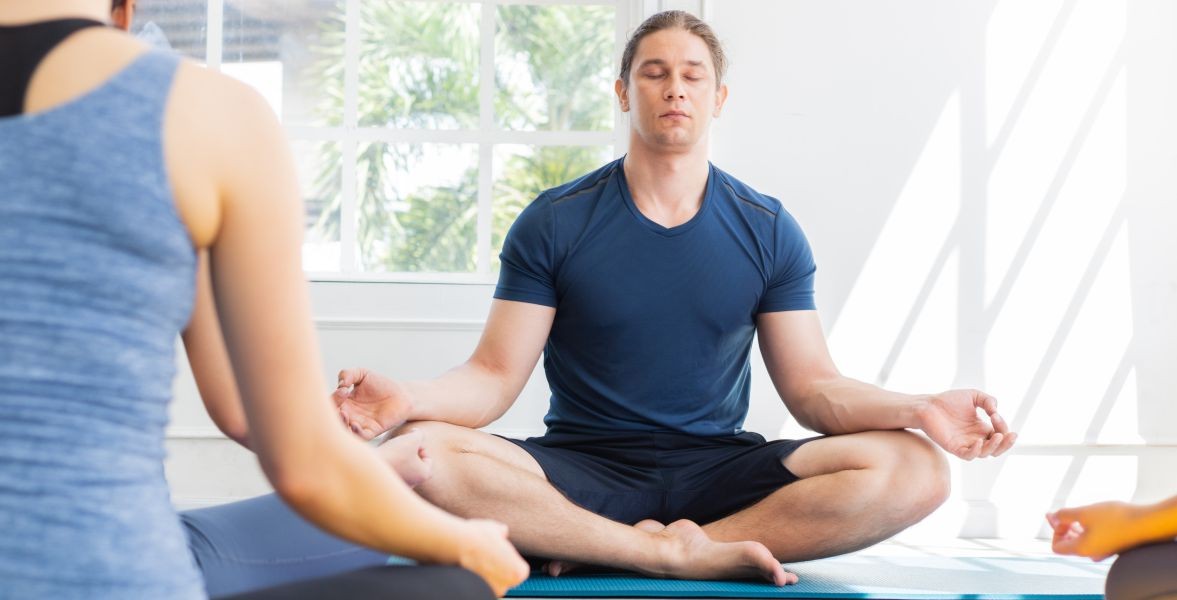
Created by - Dr. Prashant Raj
Meditation Gives You Inner Peace
If stress has you anxious, tense, and disturbed, think about attempting to practice meditation. Regular practice of meditation will restore your calm and inner peace. Anyone can follow meditation. It's straightforward and very cost-effective. What is Meditation? Meditation has been practiced for thousands of years. Meditation is originally meant to assist a deep understanding of the sacred and mystical forces of life. These days, meditation is usually used for relaxation and stress reduction. Meditation is taken into account as a sort of mind-body practice of medicine. Meditation will give you a deep state of relaxation and a tranquil mind. During meditation, you focus your attention and eliminate the stream of topsy-turvy thoughts that affects your mind and inflict stress. This method could lead to increased physical and emotional well-being. Benefits of meditation Meditation will provide you with a way of calm, peace, and balance which will enhance your emotional well-being and your overall health. You’ll be able to additionally use it to relax and deal with stress by focalization your attention on one thing that increases the calming sense. Meditation will assist you to learn to remain targeted and keep inner peace. Meditation could assist you to manage symptoms of chronic medical conditions. Types of meditation Meditation is an umbrella term for the numerous ways in which to realize a relaxed state of being. There are many varieties of meditation and relaxation techniques that share the goal of achieving inner peace. Ways to meditate will include:- Guided meditation- Typically referred to as radio-controlled imaging, with this technique of meditation you kind of imagine pictures of places or things you discover restful. You try to use as several senses as doable, like smells, sights, sounds, and textures. You’ll be guided through this method by a guide or teacher. Mantra meditation - During this sort of meditation, you taciturnly repeat a word, thought or phrase to stop distracting thoughts. Mindfulness meditation. This kind of meditation is predicated on being aware or having an inflated awareness and acceptance of everything around you. In heedfulness meditation, you broaden your awareness. You target what you experience throughout meditation, like the flow of your breath. You’ll be able to observe your thoughts and emotions. However, allow them to pass without any judgment. This usually combines meditation, relaxation, physical movement, and respiration exercises to revive and maintain balance. Energy gong (CHEE-gung) is a component of ancient Chinese medication.Tai chi. This can be a type of mild Chinese martial arts coaching. In t'ai chi chuan (TIE-CHEE), you perform a self-paced series of postures or movements in a slow, sleek manner whereas active deep respiration. Transcendental meditation -Transcendental meditation may be a straightforward, natural technique. During this type of meditation, you taciturnly repeat a mantra, like a word, sound, or phrase, in a specific manner. This form of meditation could enable your body to settle into a state of profound relaxation and your mind in a state of inner peace, with no need to use concentration or effort. Yoga - You perform a series of postures and controlled respiration exercises to achieve a versatile body and a peaceful mind. As you progress through poses that need balance and concentration, you are inspired to focus less on your busy day, but more on the present moment. Elements of meditation Different types of meditation could embrace different options to assist you to meditate. A number of the foremost common options in meditation include:- Focused attention - Focusing your attention is one of the most necessary parts of meditation. Focusing your attention on specific things, helps you to free your mind from the numerous distractions that cause stress and worry. You’ll be able to focus your attention on such things as a selected object, an image, a mantra, or maybe your respiration. Relaxed respiration - This system involves deep, even-paced respiration that includes the relaxation of the diaphragm muscle to expand your lungs. The aim is to slow your respiration, soak up additional chemical elements, and scale back the utilization of shoulder, neck, and upper chest muscles whereas respiration so that you breathe expeditiously. A quiet setting - If you are a beginner, active meditation could also be easier if you are in a quiet spot with few distractions, together with no tv, radios, or cell phones. As you get some experience in meditation, you'll be ready to meditate at any place, particularly in high-stress situations wherever you benefit from meditation, like a tie-up, a nerve-wracking work meeting, or an extended line at the market. Simply try and be snug so that you'll be able to get the best out of your meditation. Aim to stay in a suitable posture throughout the meditation with an open perspective. Let thoughts pass your mind without any judgment.
More detailsPublished - Wed, 22 Jun 2022
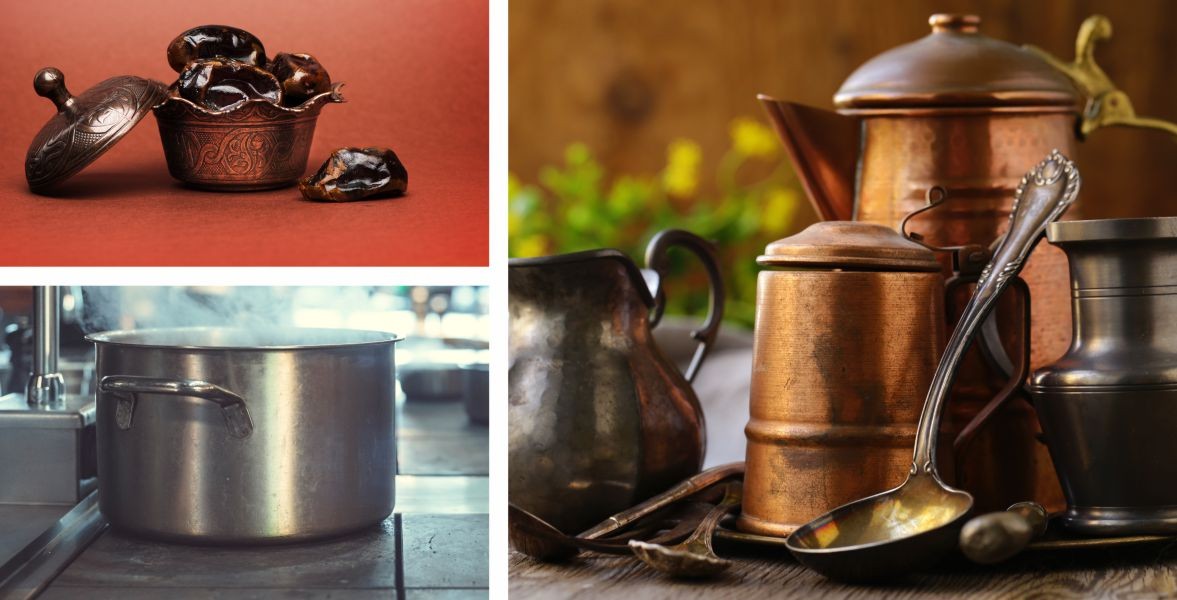
Created by - Dr. Prashant Raj
HEALTH BENEFITS OF USING OLD VESSELS FOR COOKING
Iron has long been recommended as the best metal for cooking. We gain the health benefits of absorbing iron by cooking in ironware, which is healthy for the body. You might try replacing some of the hazardous cookware in your kitchen with some pure metal pieces. This will unquestionably increase longevity and health. Old vessels, especially bronze utensils, provide health advantages in that they are not dangerous to the typical person. The human immune system is impacted by the leaching effects of some metal vessels, though. You will see several metal utensils being used in the kitchen if you look through an Indian family. Some of them, however, have extraordinary medical and healing qualities. As follows:1. KansaKansa is a pure bronze alloy made of 78 percent copper and 22 percent tin that is heated to 700 degrees Celsius and is typically used for drinking water and eating food daily to improve intestinal health.Consuming food and liquids from copper-plated containers modulate the thyroid glands' need for vital copper trace elements.For obtaining health benefits, it is advised to utilize it regularly. Pure Kansa contains copper, which lowers inflammation, and tin, which promotes digestion and absorption.Copper's anti-inflammatory effects relieve joint and muscle pain and treat arthritis.It effectively encourages holistic healing by enhancing gut health and immunity as well as stress relief and energy-boosting.The water kept in a Kansa doesn't go bad. Additionally, it aids in reducing water-borne illnesses like jaundice, dysentery, and diarrhea.Copper is known to offer anti-convulsant and brain-stimulating qualities that aid in brain stimulation.Controlling blood pressure also promotes cardiovascular health2. CopperThe liver, brain, heart, kidneys, and skeletal muscle all require copper to function properly. Additionally, it promotes iron absorption and supports the health of bones, blood vessels, neurons, and the immune system.Drinking water from copper vessels promotes better digestion, weight loss, faster wound healing, slower aging, relief from arthritic and swollen joints, infection protection, and other health benefits.Water stored in copper containers is free of germs, fungi, and algae, making it completely safe for consumption.Copper is a crucial element in the synthesis of melanin, which contributes to the maintenance of healthy skin and slows the aging process.Copper aids in the breakdown and elimination of fat, promoting weight loss.While using copper utensils for drinking is highly suggested, using copper plates for cooking and dining is not seen as ideal. Copper reacts with salts, acidic, and citric compounds found in food, which is why.3. SilverSince it doesn't corrode, silver is regarded as a precious metal, yet maintaining it can be challenging because it tarnishes when exposed to air.Using silver utensils to store food and beverages keeps them fresher longer than using non-silver cutlery. To preserve the flavor and freshness of milk in earlier times, a silver coin was placed within the container.Assists in making the human immune system more resilient.The cooling action of this aids in easy digestion and supports the body's metabolic process.Its antibacterial properties are known to be good for skin and aid in the prevention of many diseases as well as the healing of wounds.Using silver dishes and utensils helps prevent food contamination because of their anti-bacterial characteristics.Silver is simple to keep because cleaning silverware just requires a little soap and water.4. Stainless SteelIron, chromium, and nickel are the main components of stainless steel. Nickel is unlikely to benefit, even if iron and chromium are portrayed as good minerals.Eating out of stainless steel has no unfavorable effects and does not enhance the number of minerals in food.It doesn't react to sour or acidic foods, but for optimal health, the quality of the stainless steel must be superior.
More detailsPublished - Wed, 22 Jun 2022
Search
Popular categories
Latest blogs

All you need to know about Syphilis
Tue, 15 Nov 2022

What is Pemphigus Vulgaris?
Tue, 15 Nov 2022

Know about Scorpion Stings
Sat, 12 Nov 2022
Write a public review